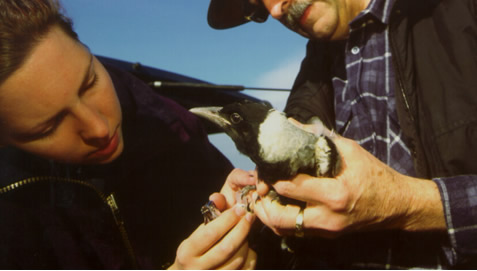Behaviour and Ecology
@ School of Life Sciences,
University of Nottingham
| Home | People | Research | Teaching | Publications | Opportunities | Links |
Sexual selection
 Sperm competition in birds and insects - Kate Durrant
Sperm competition in birds and insects - Kate Durrant
There are ways to compete before and after copulation. Behaviours such as stimulating the female to eject the sperm of rival males (seen in birds) or scraping out the ejaculates of previous males using a specially modified ‘penis scoop’ (seen in insects) are some ways of ensuring victory, or a male can compete via the contents of his ejaculate, by having the longest, fastest or most numerous sperm.
Investigations into sperm competition benefit from comparative approaches to questions about the evolution of sperm shape and the cost of producing sperm. Birds and insects, in their wide variety of forms, provide ideal subjects to explore the relationships between mating system, mate choice, male-female conflict and sperm morphology and production. Sperm is traditionally thought of to be a ‘cheap’ gamete to produce compared to the ova, but this view is starting to be challenged. Where post-copulatory sexual selection is relaxed, the cost of sperm production may also be lowered, by changing the morphology and/or the chemical composition of spermatozoa.
Kate Durrant explore these topics by comparing species and by looking intensely at the more unusual species individually.
Sexual traits as honest signals of quality - Tom Reader
Secondary
sexual traits, as exemplified by the peacock's tail, have fascinated
evolutionary biologists since Darwin's time. Traditionally, it has been
thought that such traits provide potential individuals with an honest
signal of the genetic and phenotypic "quality" of a
potential mate. But is this always the case?
Further reading:
Higginson, A. D. and Reader, T. (2009). Environmental heterogeneity, gene-by-environment interactions and the reliability of sexual traits as indicators of mate quality. Proceedings of the Royal Society B: Biological Sciences. 276 (1659): 1153 PDF.

